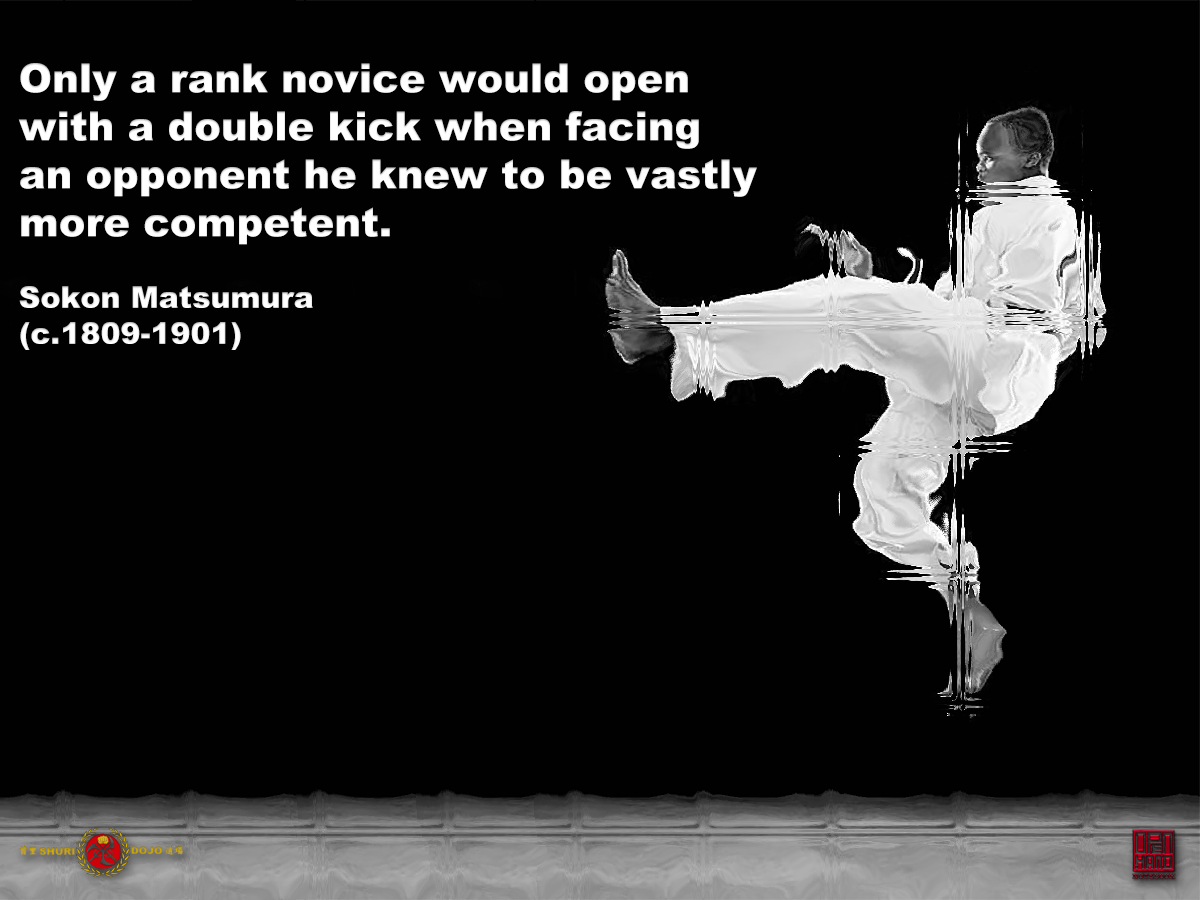
Kicks in kata are usually single in usage. However, there are a few kata that contain multiple kicks. So what use are these multiple kicks contained within the kata?
.
A kata that comes to mind is ‘Kusanku’ (there are others). The kick in question, often labeled as “Nidan geri” (二段). When I translate this, I view this as a “two step” kick (“Ni” (二) two – “Dan” (段) step), not two kicks executed together with a jump to gain height.
.
Viewing this as “two steps”, I believe this kick is giving me options. Option A, and Option B. For a self-defense situation, if you decide to kick it is always preferable to kick low, then this could be revealing to us that you kick whichever leg the opponent has in front (left or right), to drive that leg back. So instead of kicking twice, you would use the one kick on the relevant side.
.
Alternatively, or as an adjunct, the kata could be informing us that your first attempt at the kick may fail (I view kata as the management of failure), therefore it is wise to consider a second kick, with a view to the position your assailant maybe in at the time.
.
From a sport fighting perspective, perhaps the first kick could be used as a feint, when set up correctly, this often works. But in the context of self-defense, that doesn’t make much sense, given the range kata is intended for (close).
.
I believe, using one kick as a feint, was not the original intent of the kick. This is a sparring, a consensual fighting use of the kick, at a distance against another skilled martial artist. Jumping head kicks often work well in mutual consensual fights. But it doesn’t fit well in my view of pragmatic, combative karate. Losing connection to ground seems like a huge danger to me.
.
One of Gichin Funakoshi’s teachers, Sokon Matsumura (c.1809-1901), regarded ‘Nidan geri’ to be the method of a “rank novice” and a “serious mistake”. This of course would have been in a self-defense context. It therefore makes no sense that the kata he transmitted would have the above method (feint) in them.
.
Therefore, the only logical conclusion is that the jumping version is a modern incarnation – possibly for aesthetics, or a sporting reason, just as many other kicks are now done higher – and not the original motion.
.
Kata have very little to do with the tournament style fighting of today. For karate to be used as a sport, it has been watered down to the point of not being even remotely related to what we believe to be the original.
.
Karate originally was not created for “stand toe-to-toe” and trade blows with each other in a consensual fight. It is; close distance, disrupt the enemy, and end the confrontation as quickly and efficiently as possible – (and live to fight another day).
.
The nature of violent conflict is that the use of jumping kicks, or head height kicks only work well in mutual exchanges between fighters with complementary skill sets seeking a shared objective, i.e. karate tournaments, kickboxing, MMA, etc.
.
‘Nidan geri’, in my opinion, gives us the option to drive the leg[s] back and bring the head forward, which the kata then exploit to full advantage. It is one of many ways to consider the use of the kick in question that may fit into a wider understanding of the methods and principles the kata contain.![]()
![]()
.
.
With thanks to Iain Abernethy and Noah Legal
.
.
